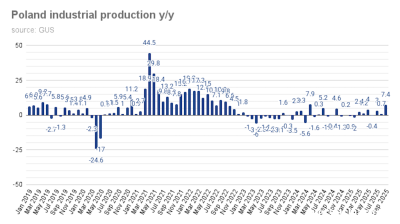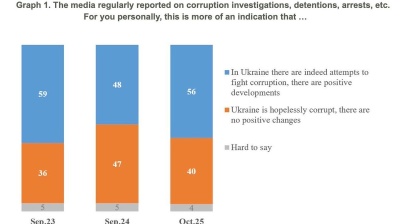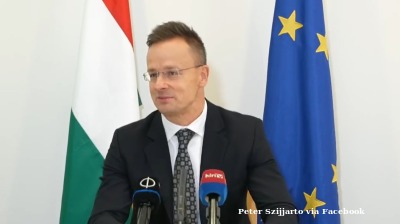Hungary's economic recovery stalled in the final quarter as output remained stagnant (chart) following a 0.4% rebound the previous quarter, ending four quarters of economic contractions, like a first reading of data released by the Central Statistics Office (KSH) shows on February 14.
Adjusted for calendar year effects, GDP rose 0.4% year-on-year in Q4. For the full year, adjusted GDP dropped 0.8%, falling for the first time since 2012, excluding the pandemic. The figures were below analysts’ estimates, although monthly data from the industry and construction, as well as retail sales, date foreshadowed a weaker end to the year than planned.
Agriculture output was a major contributor, rebounding back from a low base, due to the devastating drought in 2022. In the preliminary report, the KSH said the performance of the economy rose mainly in the farm, healthcare, social services, and ICT sectors.
Growth was countered by declines in the industrial and construction sectors, and part of market services, mainly trade. The 2023 budget act approved in the summer of 2022 assumed a 4.1% growth, which was revised to 1.5% six months later.
Reality struck home in the fall of 2023 when government officials were revising growth to near zero and did not rule out a recession. Flat growth in Q4 was largely due to the weakness of Hungary’s largest export market, Germany, stuck in recession, while output in the EU stagnated. National Economic Minister Marton Nagy said after the report.
State-subsidised corporate lending programmes, other measures such as interest rate caps, and energy subsidies dented the decline by 2.3pp. Without these, Hungary would have ended the year in a deep recession. Nagy said the improvement in credit market through lower borrowing rates and the lending programmes could ensure 4% economic growth.
The weak Q4 performance of the economy will also limit the impact of carry-over effect in 2024, and meeting the government’s 4% growth projections would require robust quarterly growth, ING Bank analyst Peter Virovacz writes, adding that ING’s 3% target is under threat.
This year, rising real wages, lower borrowing costs could lift the retail sector, and gradual inflow of EU funds could support investments, the manufacturing, and construction sectors. The European Commission at the end of 2023 unlocked €10.2bn in funding, and the first tranche from the RRF totalling €900mn is set to arrive.
Other analysts also see major downside risks to the government’s targets due to subdued export demand, a blow to Hungary’s export-oriented manufacturing sector. Amundi analysts forecast 2.2% growth in 2023, which is the lowest among Hungarian economists.
The slow recovery may increase pressure on the central bank to speed up the pace of rate cuts, which is also a main priority of the government. That scenario would be positive for bond investors but could increase volatility in the forint market again, Amundi writes.
The detailed figures will be released on March 5.
Data

Chobani yoghurt king Hamdi Ulukaya becomes richest Turk
Knocks Murat Ulker into second place in Forbes ranking as his company's valuation leaps to $20bn.

Poland’s industrial production jumps 7.4% y/y in September
September saw an unexpectedly sharp increase in industrial production after the surprise gain of 0.7% y/y in August.
Ukrainian M&A market grows 22% despite war, driven by local investors
Two large acquisitions by agriculture holding MHP and mobile operator Kyivstar accounted for more than half of the total deal value.

Ukraine’s credibility crisis: corruption perception still haunts economic recovery
Despite an active reform narrative and growing international engagement, corruption remains the biggest drag on Ukraine’s economic credibility, according to a survey by the Kyiv International Institute of Sociology.




